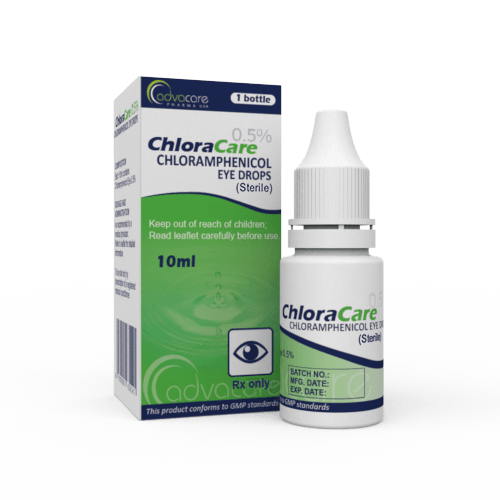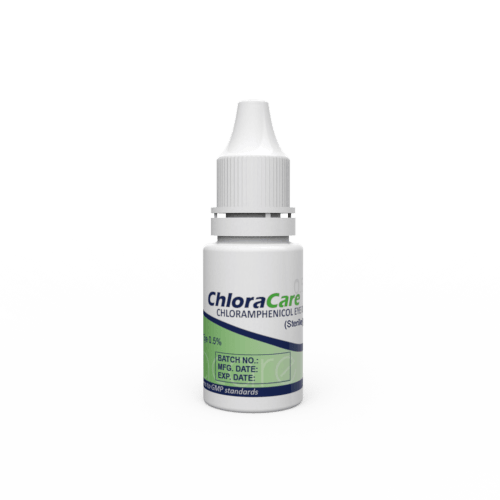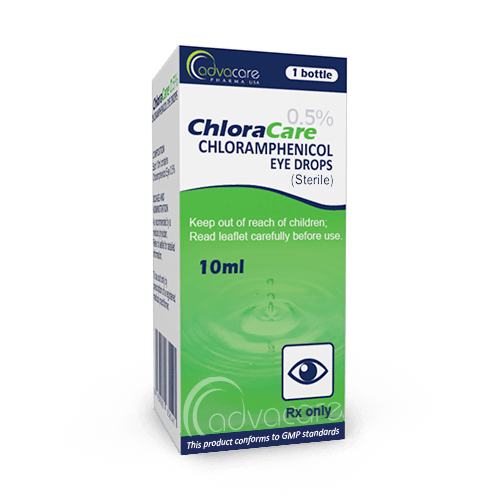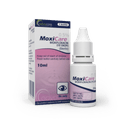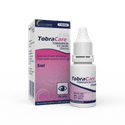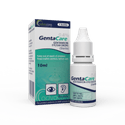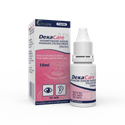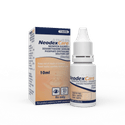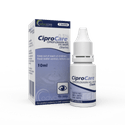- Home›
- Pharmaceuticals›
- Medical Eye Drops›
- Chloramphenicol Eye Drops
Chloramphenicol Eye Drops
Dosage
Packaging
What is Chloramphenicol?
Active Ingredients: Chloramphenicol
Chloramphenicol Eye Drops are an antibiotic drug used to treat bacterial eye infections (conjunctivitis) caused by susceptible strains, such as Escherichia coli, Haemophilus influenzae, or Staphylococcus aureus. This medication is used alone or in combination with other topical or oral drugs.
This medication is intended for ophthalmic use.
Chloramphenicol is a broad-spectrum antibiotic that was originally derived from Streptomyces venezuelae. It works by inhibiting protein synthesis in the cell wall of the bacteria. This makes it a valuable treatment for eye infections where the specific bacterial cause is not immediately known. Its mechanism of action, by inhibiting bacterial protein synthesis, ensures that it halts the growth and multiplication of the bacteria, thereby aiding in the quick resolution of the infection.
Chloramphenicol Eye Drops are particularly effective due to their ability to penetrate ocular tissues and fluids. After application, the drug rapidly reaches therapeutic concentrations in the eye, providing effective treatment against a wide range of bacteria.
The use of this medication requires careful adherence to dosing and duration of treatment as prescribed by a healthcare provider. Overuse or misuse of antibiotic eye drops can lead to the development of resistance, making subsequent infections more difficult to treat.
AdvaCare Pharma is a producer and exporter of Chloramphenicol Eye Drops. This medicine is produced in our GMP-certified facilities in China, India, and the USA. These facilities are routinely audited to ensure they comply with health, safety, and environmental standards.
Why are we a trusted Chloramphenicol manufacturer?
AdvaCare Pharma is a GMP-compliant manufacturer of Chloramphenicol Eye Drops. Over the past two decades, we have cultivated a strong reputation as a leading pharmaceutical supplier across 65 nations. As a reliable Chloramphenicol manufacturer, AdvaCare Pharma partners with pharmaceutical distributors, hospitals, pharmacies, NGOs, and government institutions to provide 30+ superior-quality eye and ear (ophthalmic/otic) medicines to global communities.
Uses
What is Chloramphenicol used for?
It is used to treat bacterial conjunctivitis (eye infection) caused by susceptible organisms.
How are Chloramphenicol Eye Drops used?
This medication is manufactured as a sterile topical solution, which is intended for administration in the eyes. Always wash hands with soap and water before and after using this medication.
What dose should be taken?
The usual dose is 2 drops applied to the afflicted eye every 3 hours for 2 days. This medicine should only be administered during waking hours.
Refer to a doctor or pharmacist for guidelines on dosage.
How should one apply Chloramphenicol Eye Drops?
To maximize the effectiveness of Chloramphenicol Eye Drops, ensure the hands are clean before application. Tilt the head back, gently pull down the lower eyelid to create a small pocket, and apply the prescribed number of drops. Close the eye for a few moments and avoid blinking immediately after application to allow the medication to spread evenly.
Can Chloramphenicol Eye Drops be used for all types of eye infections?
Chloramphenicol Eye Drops are specifically effective against bacterial conjunctivitis but may not be suitable for other types of eye infections, such as those caused by viruses or fungi. A proper diagnosis is essential to ensure the correct treatment.
How long does it take for Chloramphenicol Eye Drops to work?
Improvement in symptoms of bacterial conjunctivitis can typically be observed within 24 to 48 hours of starting treatment. The full course of treatment should be completed to ensure complete eradication of the infection.
Is Chloramphenicol safe for use in children?
Chloramphenicol Eye Drops can be used in children, but with caution and under medical supervision, especially in newborns and infants due to their increased sensitivity to the effects of the drug.
Can Chloramphenicol Eye Drops be used concurrently with other ophthalmic medications?
If other ophthalmic medications are prescribed, there should be an interval of at least 5-10 minutes between applying Chloramphenicol Eye Drops and other eye drops or ointments to prevent dilution and ensure effectiveness.
Is there a risk of developing resistance to Chloramphenicol Eye Drops?
As with any antibiotic, there is a risk of developing resistance to Chloramphenicol, especially with prolonged or repeated use. It should only be used as prescribed.
Can Chloramphenicol Eye Drops be used with contact lenses?
Contact lenses should not be worn during treatment. The presence of an eye infection typically necessitates avoiding contact lens use, and the ingredients in the eye drops can accumulate in soft lenses.
Can Chloramphenicol Eye Drops be used for prophylaxis in eye surgeries or injuries?
Chloramphenicol Eye Drops are generally not used for prophylaxis in surgeries or injuries, as their use is primarily for treating active infections. The decision to use antibiotics prophylactically should be based on a doctor's assessment.
Can Chloramphenicol Eye Drops be used for treating infections in other parts of the eye?
This medication is specifically formulated for treating bacterial conjunctivitis, which affects the surface of the eye. It might not be effective for infections deeper within the eye, such as iritis or uveitis, which require different forms of treatment.
Is it possible to use Chloramphenicol Eye Drops in combination with systemic antibiotics?
In some cases, particularly severe or widespread infections, Chloramphenicol Eye Drops may be used in conjunction with systemic (oral or injectable) antibiotics. This will depend on the doctor's advice.
Can Chloramphenicol Eye Drops cause allergic reactions?
Like any medication, Chloramphenicol Eye Drops can cause allergic reactions in some individuals. Symptoms of an allergic reaction may include itching, redness, swelling, or severe discomfort in the eyes. If an allergic reaction is suspected, discontinue use and seek medical help.
Can Chloramphenicol Eye Drops be used if there is a discharge from the eye?
These drops can be used to treat bacterial conjunctivitis, which often presents with eye discharge. If the discharge is significant, or if there are other concerning symptoms like severe pain or vision changes, consult a doctor for a proper diagnosis.
Is it safe to drive or operate machinery after using Chloramphenicol Eye Drops?
Chloramphenicol Eye Drops may cause temporary blurred vision immediately after application. It is advisable to avoid driving or operating heavy machinery until vision is clear.
What is the mechanism of bacterial resistance to Chloramphenicol?
Bacterial resistance to Chloramphenicol can occur through various mechanisms, such as the modification of the antibiotic target site, increased efflux (pumping out) of the drug from the bacterial cell, or enzymatic inactivation of the drug. Proper use of this medication helps reduce the risk of resistance development.
Should Chloramphenicol Eye Drops be discarded after the infection clears?
The drops should be discarded after the prescribed treatment course is completed, even if there is leftover solution. Typically, they should not be kept for more than 28 days after opening, as the sterility of the solution can no longer be guaranteed beyond this period.
Are there any special precautions for those with pre-existing eye conditions?
Individuals with pre-existing eye conditions or those who have had recent eye surgery should consult with an eye care professional before using the drops.
Can Chloramphenicol Eye Drops affect vision over the long term?
When used as directed, Chloramphenicol Eye Drops are not known to cause long-term vision problems. However, any persistent changes in vision or eye discomfort after the completion of treatment should be evaluated by a doctor to rule out any underlying issues or complications related to the infection or the drug itself.
How should Chloramphenicol Eye Drops be stored?
Chloramphenicol Eye Drops should be stored in a cool, dry place, away from direct light and heat. After opening, the drops should be used within a specified period, usually 28 days, after which they should be discarded.
Side Effects
As with all pharmaceuticals, some unwanted effects can occur from the use of Chloramphenicol Eye Drops.
Common side effects include, but may not be limited to:
- mild stinging or irritation
- red or itchy eyelids
- sensitivity to light
- dry mouth
- blurry vision
Serious but rare side effects include:
- signs of an allergic reaction
- bone marrow damage (after long-term usage)
For a comprehensive understanding of all potential side effects, consult a medical professional.
When experiencing mild side effects such as stinging, irritation, or dry mouth after using Chloramphenicol Eye Drops, these often subside as the body adjusts to the treatment.
Persistent or worsening symptoms should be brought to the attention of a healthcare provider. For serious side effects like signs of an allergic reaction or any indication of bone marrow damage, which can manifest as unusual tiredness, recurrent infections, or easy bruising, immediate medical intervention is critical.
Precautions
Do NOT use Chloramphenicol Eye Drops if:
- You are allergic to Chloramphenicol or any of the other ingredients.
- You have liver problems.
- You have blood-related problems like anemia or decreased platelets.
- You have peripheral neuropathy.
- You are pregnant or breastfeeding.
Chloramphenicol may not be suitable for people with certain conditions, so it is important to consult with a doctor if: • You have any other eye infections.
You may experience blurred vision after using these eye drops. Do not drive or use heavy machines until your vision is clear.
When applying, maintain proper hygiene to avoid contamination of the dropper and the solution. Always wash your hands before using the eye drops and avoid touching the dropper tip to any surface, including the eye itself.
If you wear contact lenses, remove them before application and wait at least 15 minutes before reinserting them, as Chloramphenicol can interact with contact lens materials.
In the case of concurrent use of other ophthalmic solutions or ointments, wait at least 5 to 10 minutes between different medications to ensure proper absorption and efficacy.
References
Methicillin-Resistant Staphylococcus aureus and Methicillin-Resistant Coagulase-Negative Staphylococcus Ocular Surface Infection
The objective of this study was to evaluate the effect of chloramphenicol eye drops in cases of Methicillin-resistant Staphylococcus aureus (MRSA) and methicillin-resistant coagulase-negative Staphylococcus (MR-CNS) infections in elderly patients.
The results showed that the proportion of MRSA in S. aureus was 57%, and the proportion of MR-CNS in coagulase-negative Staphylococcus was 25%. Chloramphenicol eye drops in cases of MRSA conjunctivitis have an 81% efficacy rate.
The conclusion is that Methicillin-resistant S. aureus and MR-CNS in elderly patients can be treated with chloramphenicol eye drops.

You might be interested in...
Why AdvaCare Pharma?
As an industry leader, we are aware of our responsibility to provide affordable and sustainable solutions to improve healthcare worldwide.
